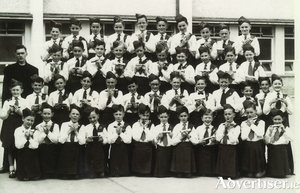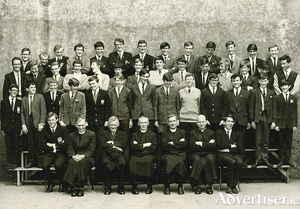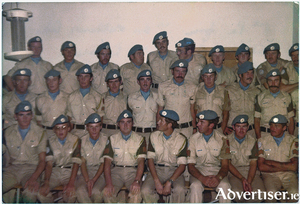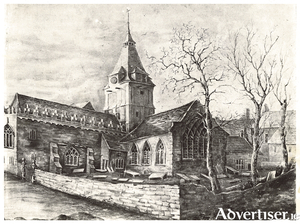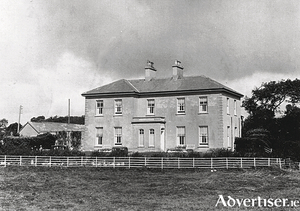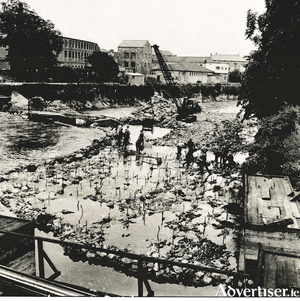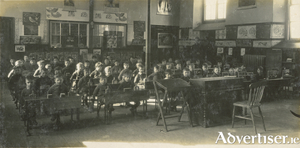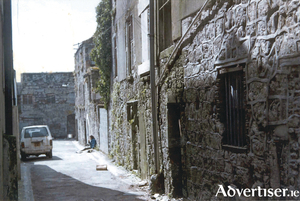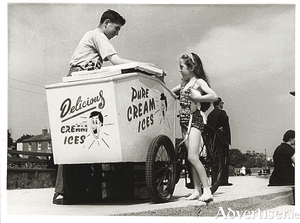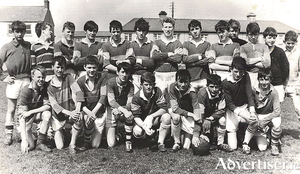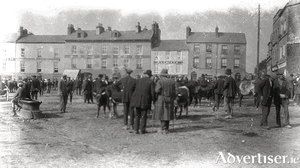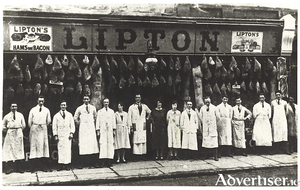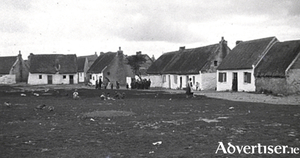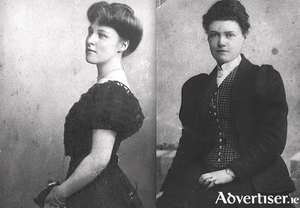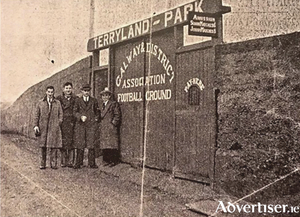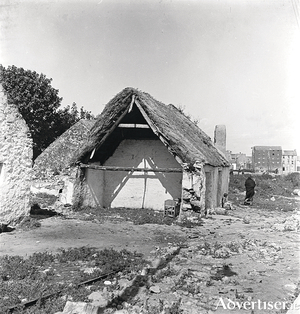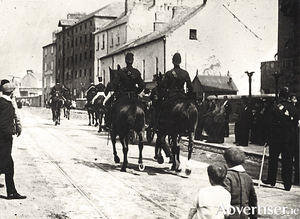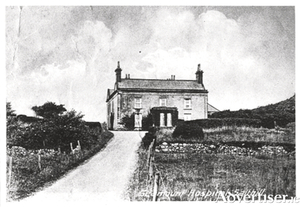Calling all graduates of St Patrick’s National School
Thu, Jun 07, 2018
On April 1, 1954, 941 boys marched from the Bish National School, Nuns’ Island, and from the Old Mon in Market Street to their ultra-modern bright new school, St Patrick’s, which was situated at the corner of Lombard Street and Bridge Street. The new school was built on a site which had been the location of the Shambles Barracks, which was occupied by the British army for many years up until 1909.
Read more ...The Jes Leaving Cert class of 1968
Thu, May 31, 2018
It is interesting to meet someone again after a long period of time, especially someone with whom you spent five days a week for about six years, but that is what school reunions are all about. People will have inevitably aged and may have gained bellies, more wrinkles, their hair greyer than before, or maybe have no hair at all, so there is often a little tension mixed with the expectation of meeting them again. But the end result is generally delight at reviving old friendships, at the renewed camaraderie, at all the nostalgia, the memories of sporting occasions, the sharing of photographs and, of course, the stories about particular teachers. Indeed, some who were slogged or mistreated by teachers may use the reunion as a kind of revenge. Inevitably, some stories will have taken on legs — “The older we got, the better we were”. The reunion is also an occasion to remember colleagues who have died in the interim.
Read more ...Platoon
Thu, May 24, 2018
The year 1958 was the first time the Irish Army sent a number of personnel on a peace mission to work abroad. They were a team of observers who went to the Lebanon. The next group to go abroad were members of An Chéad Cath and they were stationed in the Congo from 1960 to 1963. From 1963 to 1974, our soldiers were stationed in Cyprus, and later a number were sent to the Sinai Desert for nine months. After the Dublin/Monaghan bombings, all Irish military personnel were withdrawn and brought home
Read more ...St Nicholas’ Collegiate Church, 1823
Thu, May 17, 2018
This drawing of the Collegiate Church was done in December 1823 (at about 2pm according to the clock) by EW Thompson. It was presented to the vestry by another EW Thompson of Tullymore, Broughshane, Co Antrim, in 1947.
Read more ...The Garda Barracks, Salthill
Thu, May 10, 2018
The building which houses the Garda station in Salthill was originally called Forster Park and was constructed as a summer house by the Blake Forster family at the end of the 18th century. In 1850, it was bought by the Palmer family who were well known whiskey distillers, flour millers, and makers of porter. Most of their business was based in Nuns’ Island. Their coat of arms can still be seen on the facade of this building. We can presume that Palmer’s Rock (sometimes known as Saunder’s Rock), on the shore in front of this house, was named after a member of the family.
Read more ...The dredging of the river
Thu, May 03, 2018
The main channel discharging all the water from loughs Corrib and Mask is the Galway River, flowing from Lough Corrib through the city to the sea. Among the structures built in 1850 and the following years, during the course of a drainage scheme carried out by what was then known as The Board of Public Works in Ireland, was the main regulating weir across the Corrib at Waterside. Its function was to control the river level at Galway in the interests of draining, milling, and navigation. It was built at a point in the river where the water descended though rapids.
Read more ...The Monastery School
Thu, Apr 26, 2018
The establishment by the Patrician Brothers of a school for boys would have a fundamental influence on education in Galway for about 130 years. The school was set up by Brothers Paul O’Connor and James Walsh on a site belonging to the Charity Free School which was formerly an army barracks, and it opened in January 1827. Three hundred boys attended on that day. The total funding available to the school was the sum of one shilling.
Read more ...Kirwan’s Lane c1965
Thu, Apr 19, 2018
In spite of the sunshine, this is a dreary 1960s photograph of Kirwan’s Lane which was originally taken by Derek Biddulph.
Read more ...Selling on the Prom
Thu, Apr 12, 2018
The first people to sell produce along the Promenade were women who carried buckets of cockles and mussels and sold them to tourists. They would sit on the concrete seats and announce their wares. I don’t know if they sang “Alive alive oh” in a Galway accent or not.
Read more ...Saint Anthony’s College
Thu, Apr 05, 2018
The Franciscans first came to Galway in 1296 and founded the Abbey. In 1483, a school of advanced theology was instituted there. When the Cromwellians invaded the city, the friars were expelled. In 1657, the friary was destroyed and the church was turned into a courthouse — the present courthouse stands on the same site. In 1660, a new church was erected on the present site of the Abbey. There were 13 friars there in 1766, and eight years later a novitiate was opened here. The present friary was built or rebuilt in 1820, and the present church opened c1836. It was renovated in the 1970s and became the first Franciscan parish in 1971.
Read more ...98’s — Under-16 Street League champions, 1968
Thu, Mar 29, 2018
In 1893, a Bohermore hurling club was affiliated to the County Board. There was a strong nationalist tradition in the area and so the club evolved into Bohermore 98’s in honour of the centenary of the 1798 rebellion. The guiding lights of the club were Jim Tonery, Paddy ‘Ham’ Ruffle, and John Crowe. The club forfeited a County Championship in 1903 when one of their players was sent off. The team protested at the injustice of the decision and walked off the pitch. Their clubhouse was in Bohermore on a site that was later occupied by “Monto’s Shop” and is today covered with townhouses.
Read more ...Fair day, Eyre Square, September 2, 1926
Thu, Mar 22, 2018
This photograph of a cattle fair on Eyre Square was taken looking toward the west. The buildings in the distance were, on the far left, Gilbey’s, drinks distributors which later moved premises to William Street; next to it was Webb’s Hotel. This was originally built in 1810 and was known as the Clanricarde Arms. It was later known as Kilroy’s Hotel, then Murphy’s, until it was taken over by Joe Delaney and he changed the name to The Imperial Hotel.
Read more ...Liptons in Galway
Thu, Mar 15, 2018
In 1871, Thomas Lipton from Glasgow used his savings to open his first shop. By the 1880s he had more than 200 shops. He was an entrepreneur, and when he realised that there was potential for growth in the market for tea, and that the product was too expensive, he went to Ceylon and bought his own tea plantation. He sold his tea at low prices in one pound, half pound, and quarter pound packets, and he advertised it very cleverly: “Direct from the Tea Gardens to the Teapot,” or, “Treat your Lips to a Cup Of Lipton’s Peko Tips Tea, two shillings and eight pence per pound.”
Read more ...Stop! This is The Bal
Thu, Mar 08, 2018
This pub was one of Salthill’s landmarks for over a century. It was a post office originally until Joe Crehan from Ballinasloe bought it at the end of the 19th century and converted it into a pub, grocery, and guest house. The name Ballinasloe House was quickly shortened in Salthill to ‘The Bal’. At the time Salthill village ran from here to Seapoint with a few houses further west.
One of his early advertisements boasted, “The first house you see entering Salthill and the last you want to forget.” He was a dab hand at PR, “This is the home of the Gaels. English spoken and understood if you cannot understand your native language.” “If you stay at the Bal, you will enjoy Salthill.” His greatest slogan was the one he painted on his gable end: “Stop! This is The Bal.” It is etched in the memory of generations of Salthillians. It was so effective that Mrs Scallan next door, where O’Connor’s is today, was forced to retaliate with “Don’t Stop! Keep going to Scallans, the Salthill House”.
Read more ...The ‘Green Grass’ in The Claddagh
Thu, Mar 01, 2018
This photograph of ‘The Green Grass’, also known as ‘The Big Grass’, in The Claddagh was taken on July 29, 1914. It was taken from roughly where the Claddagh Hall is today. There was a wide expanse of grass off to the left towards where South Park is today. In the early days parts of it were tidal, the tide would come in here in the form of a series of streams. In Peadar O’Dowd’s wonderful book Down By The Claddagh, there is an image of this area with a very large stream in the foreground. These streams were gradually filled in, thus creating the kind of surface we see in the photograph. There were occasional sandy patches visible on the grass.
Read more ...A Galway family history with global echoes
Tue, Feb 27, 2018
A FASCINATING documentary by Billy Murray premieres next week in Monivea and Nun’s Island Theatre. A Curious Burial Arrangement tells the story of cousins Rosamond and Kathleen Ffrench, last scions of the dynasty of Monivea Castle, interwoven with that of Billy’s mother Mary, who was a history teacher in Galway.
Read more ...Eamonn Deacy Park
Thu, Feb 22, 2018
The townland in which this park is situated is known as Terryland or Tirellan, derived from the Irish Tír Oileáin (the Land of the Islands) which was so named because the river divided into many streams, thus creating islands in the area. It is in the civil parish of St Nicholas in the Barony of Galway.
Read more ...The end of the old Claddagh
Thu, Feb 15, 2018
In 1812, there were 468 cabins or houses, all thatched, in The Claddagh. These were occupied by 50 families, totalling 1,050 males and 1,286 females. That was a lot of people and houses in a relatively small geographical area and could be described as a “clachan”, a large irregular group of houses clustered closely together. All of these houses were single storey buildings, only the two-storeyed Aran View House and the early 19th century coastguard houses were higher.
Read more ...Part of Forster Street, 1905
Thu, Feb 08, 2018
This photograph, taken from an old glass slide, shows some important personage in an escorted carriage leaving the Great Southern Hotel. There are some mounted liveried gentlemen in front and two RIC men on horseback behind the carriage, which is hidden by the RIC men. You can see a policeman on foot to the right of our picture.
Read more ...Seamount Nursing Home
Thu, Feb 01, 2018
A “to let” advertisement in a Galway newspaper in April 1860 promoted the fact that Seamount Villa contained a parlour, drawing room, six bedrooms, a kitchen, water closet, a coach house with some stabling, and a small garden. The grounds were nicely laid out and had an approach to the sea. George Fallon who lived at ‘The Baths’, Salthill, would show the place to prospective customers.
Read more ...